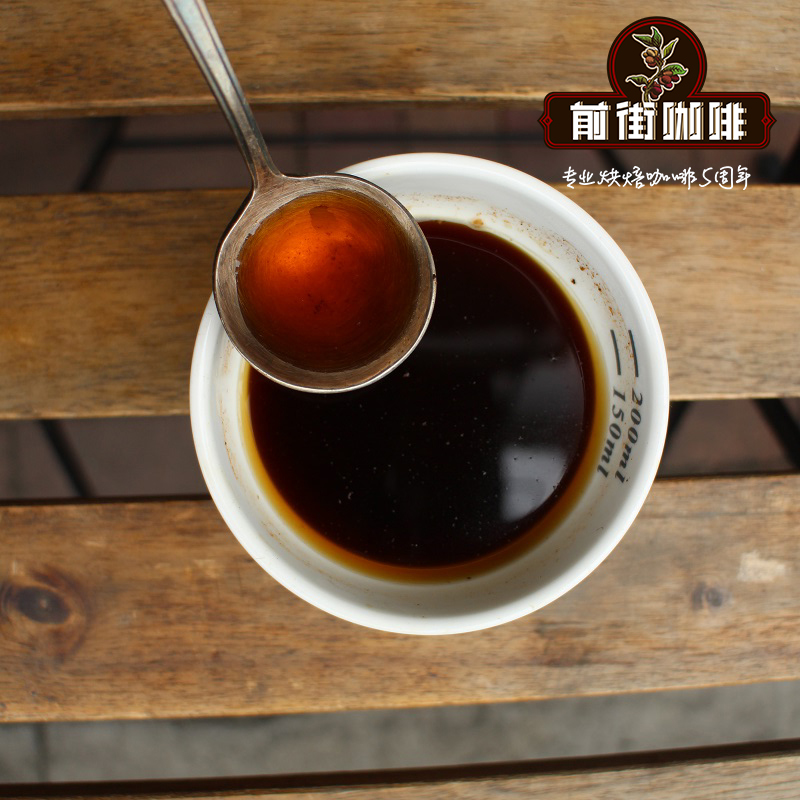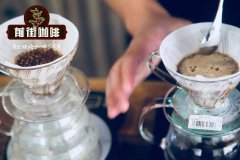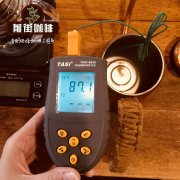The Yemeni mocha Hirazi producing area according to the flavor of the wild mocha coffee variety of Sima Ismaili?

Professional coffee knowledge exchange More coffee bean information Please pay attention to coffee workshop (Weixin Official Accounts cafe_style)
Yemeni Mocha Hirazi Region Ismaili Wild Coffee Variety Flavor?
The origin of wild coffee is probably Ethiopia in northeast Africa. In the 15th century AD, it spread to Yemen in southern Arabia and was cultivated artificially. In the early 16th century coffee was also cultivated in Egypt. In 1670, it first spread to Europe under the name Café de Moka. Moka is actually Yemen's export port "Moka"(Arabic for Mūkha), known in Europe as the export center of coffee. Ismaili is the most traditional Yemeni coffee tree species. It is grown in the Hirazi region of Ismaili. It is located at an altitude of 6500 - 8000 feet. Coffee beans are still obtained in the same way as in ancient times. Wild coffee cherries grow naturally on trees. No chemical fertilizers and pesticides are used in the ripening process. Coffee cherries naturally fall to the mud after drying on trees. The coffee farmers only bring coffee home from the ground and grind the dried peel and pulp with a stone mill. This is the most primitive sun-dried bean treatment method. Ismaili coffee beans in Yemen are still produced in this way. Ismaili beans are quite different in size, which is different from her natural wild in steep rainfall and poor soil. It is precisely such unique and difficult natural growth conditions that make her irreplaceable coffee Jianghu status in the coffee world.
i is the most traditional coffee tree species. The Hirazi producing area where This is the most primitive method of sun-curing beans, and Ismaili still produces beans in this way today. Ismaili's beans vary greatly in size (photos on this blog). This is related to her natural wildness on narrow terraces with steep rainfall, poor ridges and insufficient sunlight. It is also such unique and difficult natural growth conditions that make her irreplaceable in the coffee world.
Yemen is located in Asia, and Yemen's name originated from the Yemeni town of Mocha on the Red Sea. This region monopolized coffee exports in the 15th century, especially in the Arabian Peninsula. Mocha coffee grown in Yemen was exported to all parts of the world through the port of Mocha in Yemen. Yemen is located in Asia across the Red Sea and Ethiopia in East Africa. It is the highest quality coffee producer by natural sun method, including sun-cured beans from nearby East Africa. In the early days, it was exported from Mocha Port to all parts of the world. Therefore, the sun-cured beans produced in Ethiopia including Yemen and East Africa are collectively referred to as mocha beans.
Yemeni mocha coffee natural sun treatment method is to manually harvest fully mature coffee beans directly after the harvest of coffee beans placed in a special field or compacted soil in the front yard to receive sun exposure. During the sun drying period, rice is generally turned with a wooden rake to keep each coffee bean evenly dried. After about 20 days, the outer pulp and peel of coffee beans are removed.
Yemeni mocha coffee; round in shape and yellow-green in color. The average temperature is 23 - 28 degrees Celsius. The annual rainfall is 1,500 - 1,800 millimetres and the dry season lasts for two to three months. The unique difficulties of the dry season and the unfavorable conditions for coffee growth have bred Yemen mocha coffee, which is irreplaceable in the coffee world.
Yemeni mocha coffee is rich in flavor, complex, wild, rich, fermented and low in acid quality, and Yemeni mocha coffee often contains an uncertain factor (when the season rains), which makes it impossible to call it the most special coffee in the world. Yemen mocha coffee is a kind of coffee full of changes and very good coffee. After brewing, you can smell the aroma of fermentation at high temperature. After the temperature drops, you can taste the varied and complex taste. When you drink coffee at low temperature, you can completely release the acid and sweetness. The wild nature is displayed without regret.
In addition, Yemen mocha coffee beans have a strong taste and aroma of black chocolate, so it is also a kind of "chocolate color" coffee beans, which makes people think of coffee mixed with chocolate, gradually evolved into a chocolate flavored fancy coffee also named "mocha". A typical example is espresso coffee with milk and chocolate. After mixing, coffee is called Caffe Mocha.
Yemen's Mocha port was no longer a port for coffee because of sediment deposition a long time ago, but from the fact that Mocha is still used as the name of coffee, it can be inferred that Yemen's Mocha port had worldwide influence at that time. Yemen's mocha coffee has the title of "noble lady in coffee industry", and is called the world's three major coffees with Blue Mountain coffee of Jamaica and Kona coffee of Hawaii.
Filter bowl:
Water temperature: 90 degrees
Abrasion: Small Fuji Abrasion 3.5
Cooking method: water-powder ratio 1:15, 15g powder, first injection of 25g water, stewing for 25s, second injection to 120g water, water cut off, wait for the powder bed water to drop to half, then inject water slowly until 225g water, extraction time about 2:00
Analysis: Three-stage brewing, clear coffee before, during and after the flavor. Because V60 has many ribs, the drainage speed is faster, and the extraction time can be prolonged when the water is cut off.
Important Notice :
前街咖啡 FrontStreet Coffee has moved to new addredd:
FrontStreet Coffee Address: 315,Donghua East Road,GuangZhou
Tel:020 38364473
- Prev

How do Burundian coffee beans are made in the sun? bourbon coffee is made by hand at Pemba processing plant in Cayanza province, Burundi.
Professional coffee knowledge exchange more coffee bean information please follow coffee workshop (Wechat official account cafe_style) beans: Burundian coffee beans Cayanza province Pemba processing plant production area information: Cayanza province Pemba treatment plant / bourbon / 1750 m treatment: sun / medium-shallow baking grinding degree: 3.5g powder: 15g powder / water ratio: 1Rod 16.6water temperature: 93 degree filter cup: V60
- Next

Flavor description of coffee bourbon washed beans in Cabuye, Burundi. Introduction to Burundian coffee producing areas
Professional coffee knowledge exchange more coffee bean information please follow the coffee workshop (Wechat official account cafe_style) [flavor description] oranges, limes, grapes, plums, rich juice when sipping, sweet and sour, taste round and balanced. Burundi is a small landlocked country located in East Africa, with Luwang to the north, east and west respectively.
Related
- Detailed explanation of Jadeite planting Land in Panamanian Jadeite Manor introduction to the grading system of Jadeite competitive bidding, Red bid, Green bid and Rose Summer
- Story of Coffee planting in Brenka region of Costa Rica Stonehenge Manor anaerobic heavy honey treatment of flavor mouth
- What's on the barrel of Blue Mountain Coffee beans?
- Can American coffee also pull flowers? How to use hot American style to pull out a good-looking pattern?
- Can you make a cold extract with coffee beans? What is the right proportion for cold-extracted coffee formula?
- Indonesian PWN Gold Mandrine Coffee Origin Features Flavor How to Chong? Mandolin coffee is American.
- A brief introduction to the flavor characteristics of Brazilian yellow bourbon coffee beans
- What is the effect of different water quality on the flavor of cold-extracted coffee? What kind of water is best for brewing coffee?
- Why do you think of Rose Summer whenever you mention Panamanian coffee?
- Introduction to the characteristics of authentic blue mountain coffee bean producing areas? What is the CIB Coffee Authority in Jamaica?

